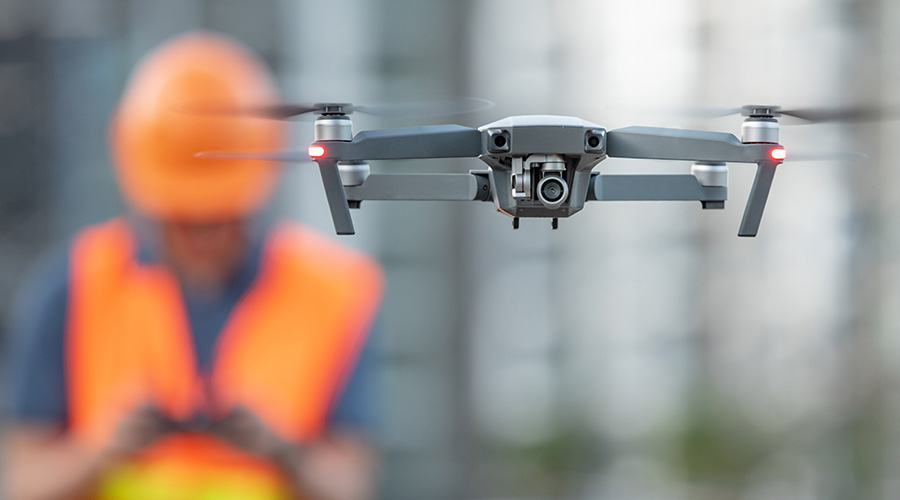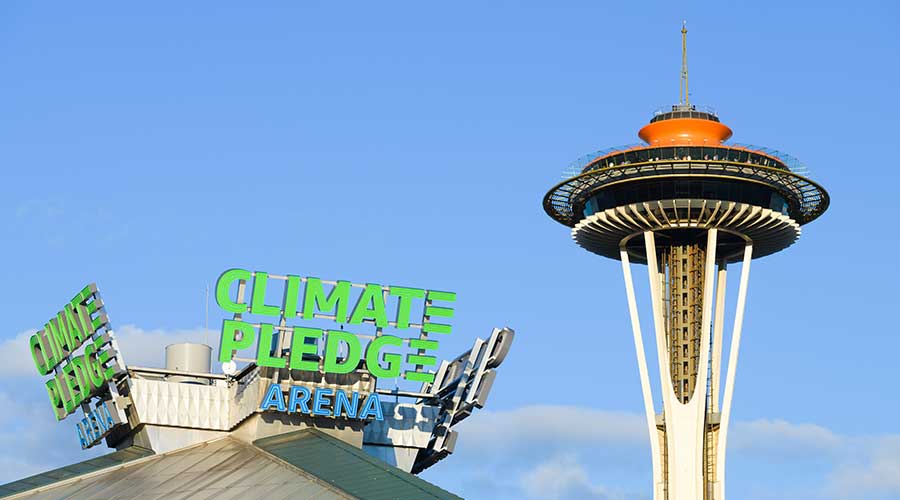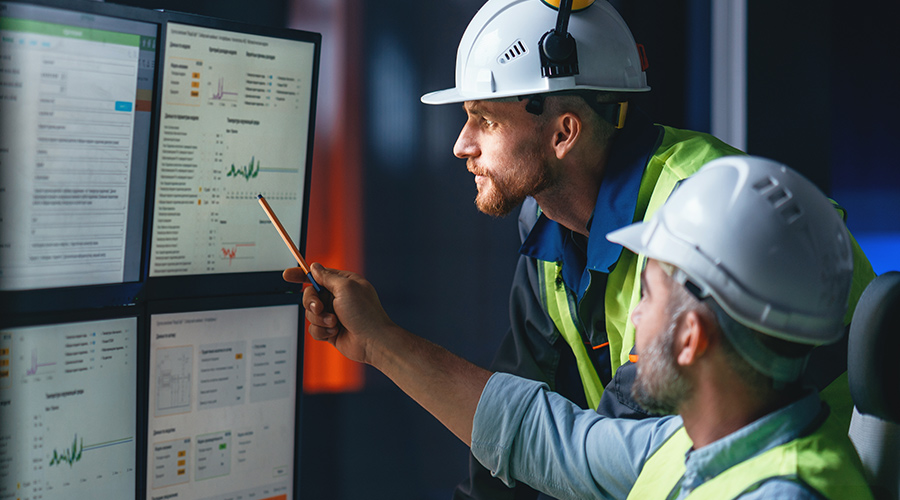 Darrell X. Rounds
Darrell X. RoundsWill Maintenance Departments Look Different After COVID-19?
As we emerge from the COVID-19 pandemic, maintenance and engineering departments are moving to the forefront in many organizations, taking on new leadership and decision-making roles. Those are very good things.
In 2020, the COVID-19 pandemic brought an entire set of new challenges for maintenance and engineering managers. Managers worked to establish protocols and procedures for building entry. They worked to institute social distancing as a norm within their properties. For the most part, this was done with a significant reduction of building occupancy.
Because of all this, the entire landscape of facilities operations and maintenance was changed in an instant. Fast forward to the present. With respect to the pandemic, we can see some light at the end of the tunnel.
The Centers for Disease Control and Prevention (CDC) reports that the number of COVID-19 cases in the United States is down, and the death rate also is trending downward. Local governments are lifting restrictions, and many people who have been working remotely for the last year are gearing up to get back to some sense of normalcy in returning to the workplace.
The questions for managers are these: Will you be ready for the return, and what will facilities maintenance look like when employees and the public return? To begin answering these questions, consider some other questions:
• Post COVID-19, how will the image and role of facilities maintenance and operations change within organizations?
• Are managers more involved in broader decisions because of the pandemic?
New role for maintenance
As a manager who has not left the workplace since the beginning of the pandemic, I have seen the role of facilities maintenance evolve and move to the forefront. Not being the core business of many organizations, facilities maintenance has often been viewed as an unseen necessity.
Now we see that many organizations have come to rely on their maintenance teams to provide leadership and guidance on what is necessary to maintain efficiency and safety as it pertains to building preparedness. Teams have been the focal point on managing requests for individuals and teams to access the workplace during the pandemic. They have been responsible for establishing the protocols that not only protect the health of individuals but also and in many cases, improve the efficiency of building operations.
During the period of low occupancy, many maintenance teams have used this as an opportunity to revisit and streamline their processes and procedures. They have created systems to increase the autonomy of service execution. They have put processes in place to increase the efficiency of their service delivery.
Now as more workers plan their return to the workplace, maintenance will be front and center. Teams will be tasked to move quickly to restore buildings to a state that is welcoming to those that have been gone more than a year, as well as conducive to productivity.
Those coming back to the workplace will not be looking to return to dusty, dingy elements. Maintenance teams will have to create the so-called wow factor so the workplace is truly a space where occupants will want to be. Creating this wow factor experience will take money, resources, planning, agility, and patience.
Preparing workplaces
Now that more maintenance teams have moved into the forefront, managers will be viewed in a different light. Instead of working in the obscurity of being an unseen necessity, managers and their teams will lead the efforts to ensure that organizations and their respective teams will return to the workplace with everything they need to execute their work successfully. They will set the cadence of how, when, and which teams return to the workplace.
But things will be different. Many workers will not return to the workplace or office. In fact, research from McKinsey showed that 80 percent of people say they enjoy working from home, 41 percent say they are more productive than they had been before, and 28 percent say they are as productive. These results suggest there will be fewer occupants in workplaces. Managers will have to learn how this new normal occupancy will affect their facilities and department activities.
How will their scope of work be impacted? Will staffing requirements change? Because of lower occupancy, will building systems’ operability be impacted? Will maintenance frequencies need to be adjusted?
These questions and many others will come into play. Recognizing that the facilities maintenance landscape will be different, managers and their teams will have to provide the answers.
Spotlight on issues
What will facilities operations and maintenance look like in a post-COVID-19 world? COVID-19 has taught managers to rethink and reprioritize several things, including cleaning services, HVAC and indoor air quality (IAQ), floor plans and workspace configurations. Initially after the return to the workplace, the protocols that are in place will not change much. But teams need to make certain processes are in place to ensure the most efficient facilitation of these protocols.
Other things for consideration with respect to maintenance in a post-COVID workplace include the enforcement of new workplace policies and how to best support a hybrid workforce that works on site and remotely.
COVID-19 also has taught workers and managers to look at cleanliness in a different way. As occupants return to the workplace, the ways that teams have cleaned, disinfected, and sanitized must change and be more transparent. Managers and teams must simplify the complexity around the definition of a clean office. Though increased vaccinations might slow the spread of the coronavirus and other airborne illnesses, the risk of transmission is still there. So teams need to ensure that they don’t rest on their laurels but instead continue with practices that produce clean and healthy workspaces.
Before COVID-19, IAQ in office buildings was an important but generally downplayed issue. The pandemic introduced an entirely new set of concerns and guidelines to the workplace. As a result, HVAC systems have received upgrades that deliver cleaner, safer, and more comfortable air than ever before, and returning building occupants will feel safer and work more productively as a result.
Office spaces
Another major consideration is the configuration of office space. For those required to work in the office, social distancing remains the order of the day. Regardless of whether government orders mandate social distancing, workers will feel safer knowing workstations are distanced appropriately so they can focus on working and not on avoiding sickness.
Many organizations have transitioned their workplaces into open office environments. Open office floor plans are much easier to clean, and they limit the amount of surface areas employees need to touch. Open office environments also are conducive to increased ventilation, which has a positive effect on IAQ.
Many workers will not return to the workplace because many organizations are embracing flexible work. Even though many workers might continue to work remotely, team members still will need to connect frequently, meaning conference spaces are likely to be in high demand. This might call for larger offices to be transformed into collaboration spaces and for organizations to invest in their audio/visual infrastructures.
Leading the way
As managers and their teams prepare for the return to the workplace, they will have many issues to consider. Systems put in place because of the pandemic, such as temperature screening at entrances, will have to be dismantled, while others such as the reopening of more entrances and parking structures will occur due to increased occupancy.
For maintenance and operations departments, more occupants usually mean more work orders, but not necessarily. In the case of more work being generated, managers will have to ensure their teams are well staffed to address these concerns. In many cases, this has been a challenge due to laid off employees receiving unemployment benefits, so managers will have to work through this issue as they staff their teams accordingly.
With vaccination rates increasing and death tolls and COVID-19 cases decreasing, society is beginning its return to normalcy. Spaces where individuals live, work and play will not be the same; the COVID-19 pandemic has taught us some things that will remain a part of our DNA from here on out.
Just as facilities managers and their teams had to be flexible, agile and resilient to manage through the pandemic, they will have to add patience and assertiveness to that recipe as they lead the return to the workplace.
Darrell X. Rounds leads electrical and mechanical engineering for General Motors’ facilities organization, Sustainable Workplaces. Rounds has more than 21 years of facilities management and engineering experience, and he has led operations and maintenance activities for facilities with more than 53 million square feet and $7.2 billion in asset replacement costs.
Related Topics:












